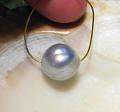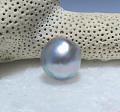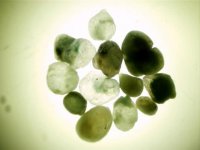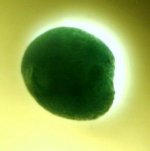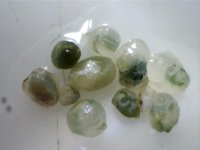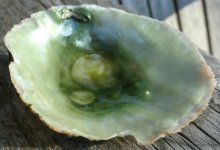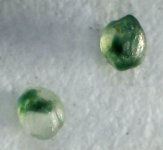Rock Oysters are sometimes called jingle shells because they're often used to make mobiles and wind chimes.
We call them podo pearls, short for Pododesmus machochisma. They break all the rules and bust a few myths as well.
It was long assumed the characteristic green color present in podos was algae infiltrating the porous structures of their highly calcitic shells. These creatures live in shallow water. It's natural shells become stained in algae, but the physiology of shell structure is something yet again. The discovery of tiny pearls in otherwise fully metabolic, sterile settings put this myth to an end.
They revealed much more though. Not only can pearls be translucent, they can be nearly transparent.
The color of a pearl is determined by protein, not it's crystalline structure. While environmental factors almost always cause pearls, it has no immediate effect on color. While seasonal changes affect the density of color, brackish or enriched mineral water claims affecting color are false.
Pearls can appear spontaneously in sterile settings. In complete absence of absence of parasites, disease or injury and have no visible nucleus.
All shells of mollusks and gastropods (and their pearls) are nacreous, irrespective of shell structure or appearance.
Rock Oysters and their scallop cousins are structured in foliated calcite. This is a departure from the classic properties of terraced aragonite common in pearl oysters, mussels, abalone etc.
They grow wild and fast. Under docks and along the rocky shore in numerous places in the sound.
